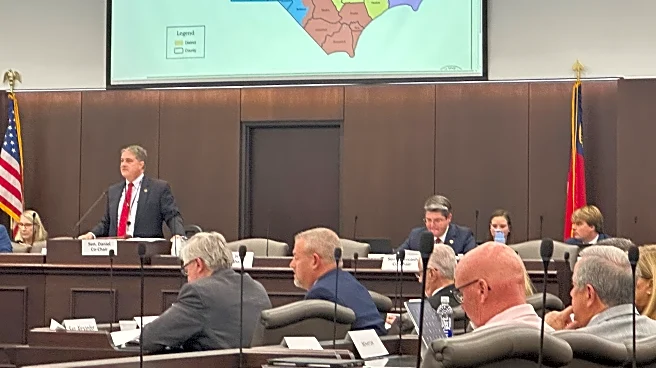What's Happening?
Legislators in the House and Senate are exploring ways to expand the National Guard's powers in cyber operations and communication resilience as part of the FY 2026 National Defense Authorization Act (NDAA).
The proposed amendments aim to position National Guard units at the forefront of protecting critical infrastructure, enhancing communication systems, and deploying modern technologies for disaster response. However, there is significant debate over whether these powers should remain under state control or be centralized under federal authority. Advocates for stronger federal coordination argue that cyber-attacks, including infrastructure breaches and ransomware, transcend state boundaries and require a unified national response. Critics, however, warn that eroding state authority could delay responses to local emergencies, such as power grid shutdowns, wildfires, hurricanes, and public health crises.
Why It's Important?
The debate over the National Guard's cyber powers highlights the ongoing tension between state autonomy and federal authority. If the federal government gains more control, it could streamline responses to cyber threats that affect multiple states, potentially improving national security. However, states with high-tech infrastructure and frequent natural disasters, like New York, Texas, and California, argue that maintaining state control is crucial for rapid response to local incidents. The outcome of this legislative debate could significantly impact how the U.S. manages cyber threats and disaster recovery, affecting both state and federal agencies' roles and responsibilities.
What's Next?
The House and Senate Armed Services Committees are expected to hold hearings where stakeholders, including the National Guard Association of the United States (NGAUS), DHS, governors, cyber specialists, and Guard leadership, will testify. Congress will need to decide how much power states should retain, how funding for costs, training, and infrastructure updates will be allocated, and which agency will have final control authority for cybercrime response. The finalization of the FY 2026 NDAA could alter how America defends against network attacks and restores connectivity after disasters, potentially exacerbating tensions between the Pentagon and governors if state views are not adequately considered.
Beyond the Headlines
The broader implications of this debate include potential shifts in the balance of power between state and federal governments, affecting not only cyber operations but also resource allocation and national readiness. The interagency conflict between the Guard Bureau, DHS, and DOW over governance of digital disaster response adds complexity to the issue. The decision could set a precedent for how similar conflicts between state and federal authorities are resolved in the future.













